There are over 4 billion internet users in the world today, and of those, 3.484 billion are active social media users. Opting out of having a social presence as a business in today’s digital age is largely irresponsible. While that point may be true, your brand doesn’t need to be as active on all social media every single day, every single hour. You can choose one social platform to focus on and concentrate most of your efforts there.
LinkedIn is currently a business favorite for good reasons. The social platform has over 575 million members, and 45% of those users are in upper management positions in their companies. For B2B business owners looking to make more meaningful connections through a social platform, LinkedIn is the choice to make. Even with B2C companies looking to hire seasoned professionals, LinkedIn is the choice to make. If your company’s target audience is college grads—50% of Americans with college degrees use LinkedIn—this is the platform for you.
Read More About: Your Effective Guide to Social Media Video Advertising
In this post, we’ll go over advertising on this platform and how you can use LinkedIn to grow a social media strategy for a local business. You can think of this post as your own personal LinkedIn advertising guide.
LinkedIn Is NOT Facebook
As loads of LinkedIn users will tell you themselves, LinkedIn is not Facebook. The digital culture is completely different, as is the kind of content that trends across the platform. LinkedIn is essentially what Facebook was supposed to be. LinkedIn is also the social site where users can connect with their network to find jobs and other career opportunities. Users can write articles and publish them on the site, or even take online classes with LinkedIn Learning. At a basic level, LinkedIn also functions like a staffing and recruiting agency that shows users the most recent job opportunities posted on the site by major brands. LinkedIn also allows users to see what specific skills they have which pertain to each job posting.
Read More About: Your Complete Guide to Marketing with Instagram
LinkedIn is an online space where users can celebrate their academic and professional success. In fact, 91% of marketing executives name LinkedIn as the best place on the internet to find quality content. When it comes to driving traffic, LinkedIn accounts for more than 50% of all social traffic to B2B websites and blogs. Facebook may be the place for viral videos of animals and memes, but LinkedIn is the social network you’re looking for if your company wants to create more meaningful connections with other business professionals.
LinkedIn Targeting Options and Campaigns
LinkedIn currently has three main advertising options for marketers: Sponsored Content, Sponsored InMail and Text Ads. To help you understand which advertising avenue is best for your business, we’ll break down each of the LinkedIn sponsored content types. (We’ve included some LinkedIn ad examples from our own LinkedIn feeds to help you out too!)
Text Ads
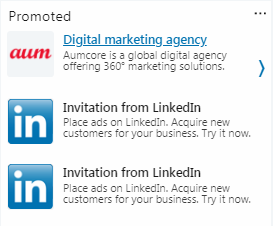
Text Ads are basically LinkedIn’s version of PPC and CPC advertising. With these ads, you can customize content to reach a specific audience demographic. This will be a good option to get your feet wet because you literally pay for each click. If you want to hit a specific audience sector, but aren’t sure as to what messaging or voice you want to use, Text Ads are good for A/B testing if your LinkedIn advertising costs are limited.
Sponsored Content
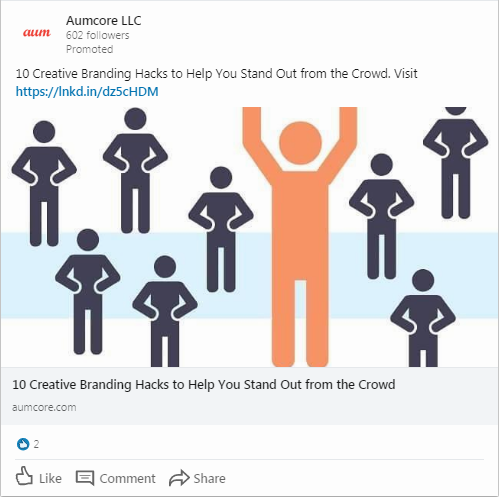
Just like any other social platform, sponsoring content means that it will appear in your target user’s feed. These kinds of ads will appear across desktops, laptops and mobile devices. Another added feature to this kind of advertising is that you can test your content and optimize your campaigns in real-time. Use this kind of advertising method if you want to generate more brand awareness for your company. Sponsored content that appears in a feed can be the most general of the three options, so you don’t have to tailor your content too much. This doesn’t mean that your copy can be boring though! You still need to write compelling copy and use a creative design that draws the eye. You can think about sponsored content like LinkedIn display ads. You want to have imagery and messaging that coincide with one another.
LinkedIn advertising best practices mirror digital marketing best practices, so use what you know about Facebook advertising and Google advertising and apply it to this platform.
Sponsored InMail
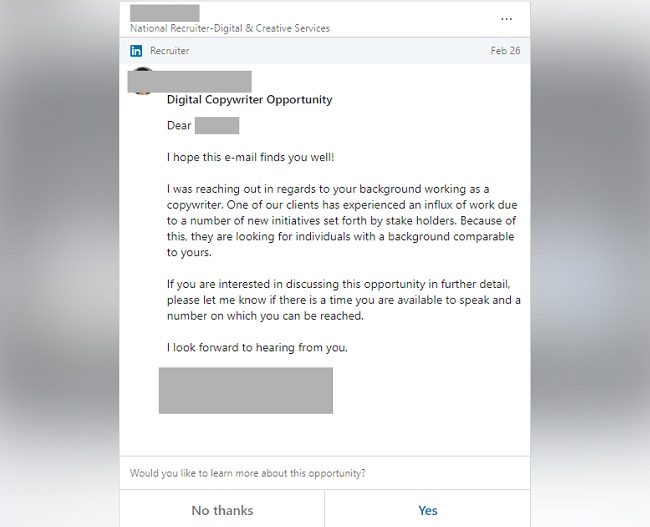
Sponsored InMail allows advertisers to directly message LinkedIn users through its messaging system. With this advertising option, you can customize your content to suit the individual you’re targeting. By creating more customized content, you can drive conversions and cultivate more meaningful connections with individuals. You will see these LinkedIn ad placements available for both desktop and mobile devices.
Use Sponsored InMail when you’re retargeting users you know are already interested in your products or services. In your message, mention how you came across their profile or what their interaction history looks like with your company. This kind of LinkedIn advertising is much more personalized, so you want to make sure your content is more detail oriented.
To start creating your advertisements, go to your LinkedIn dashboard and hit the work button in the upper right-hand corner, next to your profile picture. The drop down menu will give you a list of options; click on Marketing Solutions, and in the new tab, hit Create Ad. The next page will prompt you to create a Campaign Manager account, fill out the information needed to get your business set-up, and begin creating with the LinkedIn ad creator!
LinkedIn Targeting
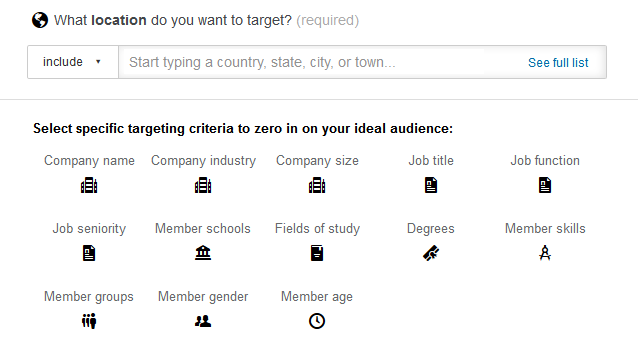
Something else to mention is LinkedIn Match Targeting, which is basically an all-in-one retargeting strategy for the LinkedIn platform. Just as you can target users who have visited your website previously by sending them a content tailored email, you can do the same with content on LinkedIn. As shown above, you can reach users who have visited your website before through Ads, Sponsored Content and Sponsored InMail. To do this, head over to your Campaign Manager, click Matched Audiences, and choose the option to “Retarget your Website Visitors.” You will then need to make an audience segment and label the audience. LinkedIn will allow you to input a URL, which will be the site that LinkedIn will source users to retarget from. The dropdown menu to the left will present you with different retargeting options:
- Exact will allow you to retarget users based exactly on the specific URL that you input.
- Starts With will allow you to retarget users who started on that specific URL and then wandered elsewhere across your site.
- And Contains is the option that you want to choose if you’re looking to retarget users who visited a specific page on your site like the checkout page or a ‘Thank You’ page. While the former will let you know that a customer did not complete the transaction, meaning you can retarget them with their cart and prompt them to complete the checkout process, the latter will indicate that they completed their transaction and you can retarget them with products or services similar to the ones they’ve already purchased.
Once you’ve decided on what kind of retargeting you want to do and which page of your website you want to focus on, there’s just one more thing you need to do. In order for the retargeting to work, you need to copy and paste your Insight Tag to your website’s code so LinkedIn can track conversions and user activity. Once the tag is placed, it can take around 48 hours to be verified.
Understanding Your Key Performance Indicators
When it comes to your key performance indicators (KPIs), they will depend on which advertising method you chose and why you chose it. If you’re looking to build brand awareness, your KPIs can be engagement, comments and impressions. You’re looking to see whether or not your content is piquing your users’ interest. If you’re looking to drive traffic, you’ll want to have creative, informative and relevant copy with Text Ads that compels users to click. You can drive your cost-per-click (CPC) down by using your digital marketing best practices as a LinkedIn advertising guide. If your team really wants to focus on conversions, starting and having meaningful conversations with your users through Sponsored InMail is what will drive your ROI up. Determine what you want to result from your LinkedIn marketing efforts and select which advertising methods will help you achieve that goal.
Key Takeaways
LinkedIn is the social platform where you can build your network and share inspiring narratives about you and your team’s academic or professional success. With LinkedIn being the most used social platform of Fortune 500 companies, it’s the place to be if you’re trying to connect with other business professionals, or even if your company is looking to target college grads. If you’re hiring for an internal position, LinkedIn is definitely the place to be. Hopefully this blog post has acted as an adequate LinkedIn advertising guide for all your needs! Let’s review the key takeaways from this post one more time:
- LinkedIn is for business (it’s not Facebook or a dating site!)
- There are three main advertising options on LinkedIn: Text Ads, Sponsored Content and Sponsored InMail
- Think about TextAds as your CPC advertising method on LinkedIn
- Sponsored Content appears in your user’s feeds and is great for brands looking to generate brand awareness and run A/B testing
- Sponsored InMail is great for re-targeting strategies and driving conversions
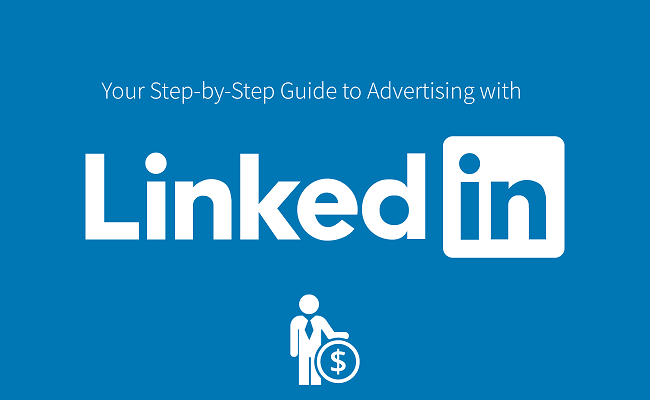
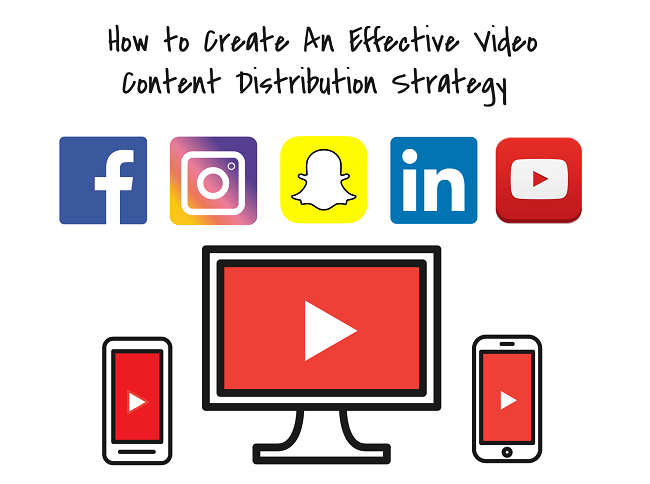
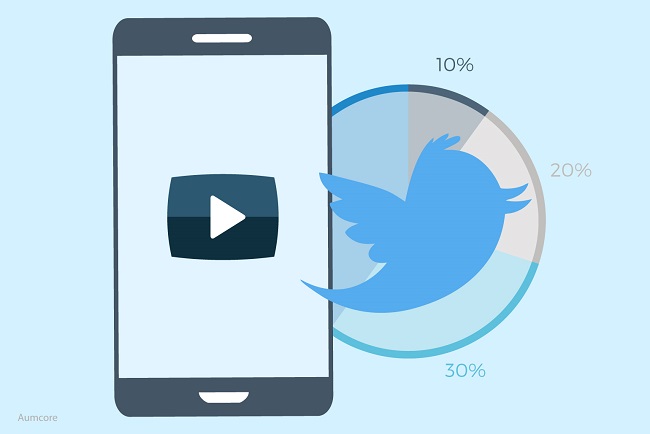


Tell us your thoughts in the comments